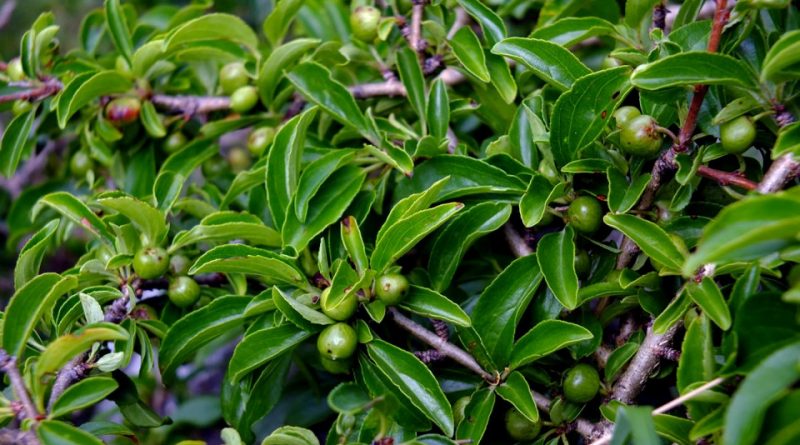Rhamnus saxatilis
Rhamnus saxatilis
The Rock buckthorn (Rhamnus saxatilis Jacq.) Is a shrub species belonging to the Rhamnaceae family.
Systematics –
From the systematic point of view it belongs to the Eukaryota Domain, Reign Plantae, Sub-Trinchebionta Subdivision, Spermatophyta Superdivision, Magnoliophyta Division, Magnoliopsida Class, Subclass Rosidae, Rhamnales Order, Rhamnaceae Family and then to the Genus Rhamnus and the Species R. saxatilis.
The following subspecies are present:
– Rhamnus saxatilis prunifolia;
– Rhamnus saxatilis rhodopea;
– Rhamnus saxatilis saxatilis;
– Rhamnus saxatilis tinctoria;
– Rhamnus saxatilis villarsii.
The following terms are synonymous:
– Rhamnus saxatilis subsp. infectoria (L.) P. Fourn .;
– Rhamnus infectoria L ..
Etymology –
The term Rhamnus comes from the Greek ῥάμνος rhámnos, name attributed to several shrubs by Theophrastus and other Greek authors.
The specific epithet saxatilis comes from sáxum sasso, stone: of stony ground.
Geographical Distribution and Habitat –
The Rock buckthorn is a species of southern Europe with distribution extended to the region surrounding the Black Sea. In Italy it is present in almost all the northern regions, in the Marche and Abruzzo. The regional distribution extends over almost all the mountainous areas, and in Friuli it goes down to the plains along the shores of the streams.
Its habitat is that of arid places; it is found in sparse bushes, thickets, dry meadows, on calcareous stony substrates, from sea level (where it is rare) to the mountain belt, up to about 800 m of altitude.
Description –
Rhamnus saxatilis is a shrubby species that grows from 0.5 to 2 m, with numerous branches ending in thorns
The leaves are deciduous, more or less opposite, more or less leathery, with a border of 1-4 cm, with 3-5 pairs of arched secondary veins.
The flowers are yellowish, with 4 petals and 4 sepals and a bifid stylus.
The species is hermaphrodite (it has both male and female organs) and is pollinated by insects.
The flowering period is April-May.
The fruits are stone fruit, obovoid or globose, 4-6 (7) mm, slightly depressed at the apex, blackish when ripe, fleshy, smooth on an erect-patent peduncle, 4-6 mm.
The seeds 2 (3) of 4-6 x 3.5 mm., Obovoid and brownish.
Cultivation –
The Rock buckthorn can be easily cultivated as it does not require particularly fertile soils and no particular quantities of water are needed.
As for the substratum, it prefers calcareous and poor soils.
For the cultivation it is possible to start from seed that must be previously germinated on a sandy and transplanted substrate, with the same earth loaf, when the seedlings have reached 10 – 15 cm.
It requires a rescue irrigation especially in the early periods after taking root.
Uses and Traditions –
Rhamnus saxatilis is characterized by having bark and toxic fruits with strong laxative properties.
Once from the immature drupes of this plant, called “grains of Spain” the “bladder green” was used, used to dye the fabric.
Preparation Mode –
The Rock buckthorn falls within that series of dyeing plants whose use has been lost over time and whose techniques should be resumed, both from the cultural point of view and from that of the extraction of the active principles for coloring purposes.
Guido Bissanti
Sources
– Acta Plantarum – Flora of the Italian Regions.
– Wikipedia, the free encyclopedia.
– Treben M., 2000. Health from the Pharmacy of the Lord, Advice and experiences with medicinal herbs, Ennsthaler Editore
– Pignatti S., 1982. Flora of Italy, Edagricole, Bologna.
– Conti F., Abbate G., Alessandrini A., Blasi C. (edited by), 2005. An annotated checklist of the Italian vascular flora, Palombi Editore.
Attention: Pharmaceutical applications and food uses are indicated for informational purposes only, do not in any way represent a medical prescription; therefore no responsibility is assumed for their use for curative, aesthetic or food purposes.


